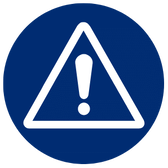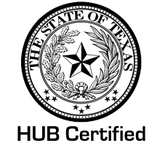|
Fireworks displays are a beautiful way to highlight a holiday weekend. Many communities hold these events, and, often, fire departments are the organizations that sponsor them. Unfortunately, fireworks can also be the cause of serious injuries and property damage. The National Fire Protection Association (NFPA) reports that in 1997 an estimated 8,300 people suffered fireworks-related injuries severe enough to require emergency room treatment. While children were the largest group affected, at least a third of those injured were adults aged 25-44. Property damage each year runs into the millions: In 1996 an estimated 24,800 fires involving fireworks caused $26.8 million in direct damage. Consider some of the following procedures to prevent accidents and limit your liability. First and foremost, contract with a professional fireworks company to fire the shells. Ask for a certificate of insurance and that your ESO be named as an additional insured on their policy. The limits of their liability policy should be at least $1 million for bodily injury and property damage. If you use employees/members of your ESO to handle the display instead, make sure they have been trained and certified to shoot fireworks. A number of states require licensing or certification in this regard. A Pyrotechnics Display Operator Training Program can also be obtained from Pyrotechnics Guild International, Inc. (www.pgi.org) Work with the fireworks company to determine adequate distances from which spectators are separated from the display, discharge and fall-out areas. The NFPA Standard 1123 gives specific requirements for the display area: Allow at least 70 foot radius for every inch of internal mortar diameter of the largest aerial shell fired. There should be no spectators, dwellings or parking areas in this radius. The shell trajectory in the discharge area should have a 25 foot clearance to any overhead objects. Ground display pieces should be at least 75 feet from any spectator viewing or parking areas. The fall-out area, where debris from spent shells and any malfunctioning aerial shells fall, should be free of all spectators, vehicles or combustible materials. If you plan to host a Fourth of July fireworks display that requires a permit on or before July 5:
0 Comments
Leave a Reply. |
|
|
© 2024 WinStar Insurance Group
13625 Ronald W. Reagan Blvd. Building 3, Suite 100 Cedar Park, Texas 78613 (512) 448-9928 [email protected] |
Home | About Us | Insurance | Training | Life & Health | Resources | Claims | News | Contact Us | Mission & Values | Privacy Statement
|
IMPORTANT NOTE: This Web site provides only a simplified description of coverages and is not a statement of contract. Coverage may not apply in all states. For complete details of coverages, conditions, limits and losses not covered, be sure to read the policy, including all endorsements, or prospectus, if applicable. Coverage CANNOT be bound, amended, or altered by leaving a message on, or relying upon, information in this Website or through E-Mail.
Licensed & doing business in the following states only: Texas, Oklahoma, New Mexico, Arkansas, & Mississippi
Licensed & doing business in the following states only: Texas, Oklahoma, New Mexico, Arkansas, & Mississippi











